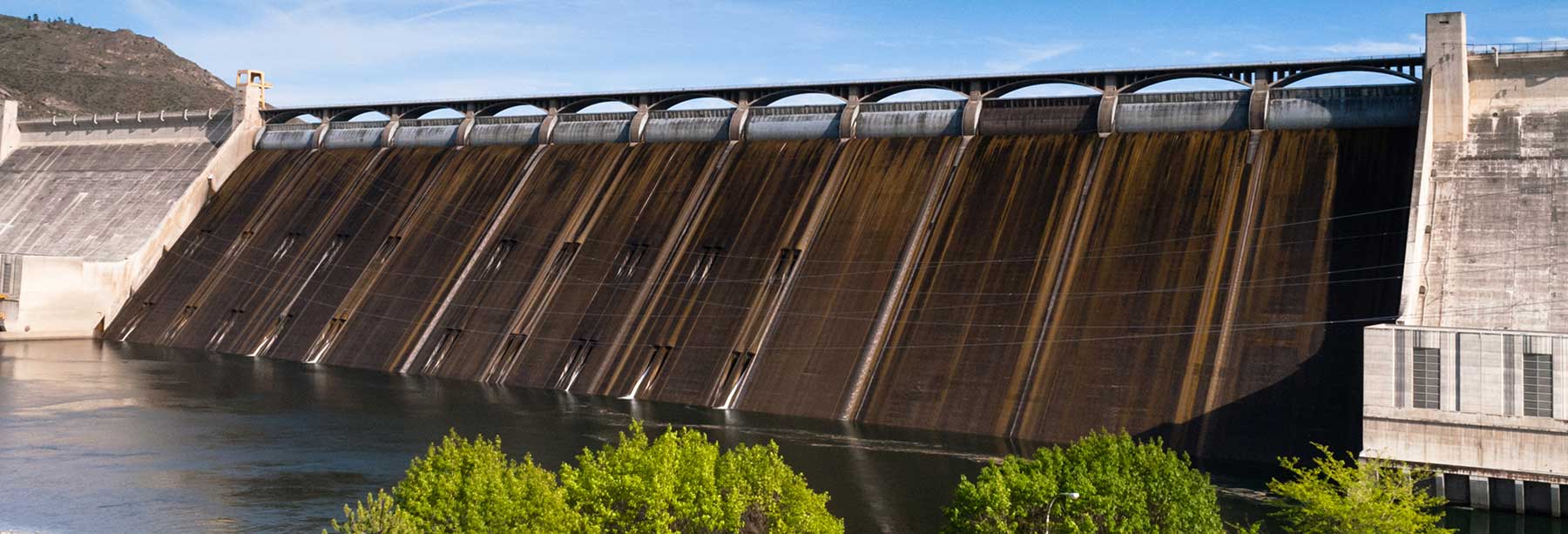Inside a Hydropower Generator

1 Water flows through the dam and turns a large wheel called a turbine. The turbine turns a shaft which rotates a series of magnets past copper coils and a generator to produce electricity. The process produces clean renewable energy.
2 The Kaplan Head is used to help adjust blades on the turbine. Adjustable blades operate efficiently despite variations in water flow and energy demands.
3 The rotor is a series of magnets. It’s the rotating portion of the generator where the magnetic field is created.
4 The stator is the stationary part of the generator made of coils of copper wire. Electricity is produced as the rotors spin past the stationary wiring.
5 The shaft connects the turbine to the rotor section of the generator. All three elements, the turbine, shaft, and rotor turn at the same speed of 90 revolutions per minute.
6 The wicket gates are a series of 20 adjustable vanes, resembling vertical blinds. They control the volume of water flowing through the turbine.
7 The 172 ton hydraulic turbine resembles a large water wheel. The turbine converts the energy of falling water into mechanical energy to drive the generator.

